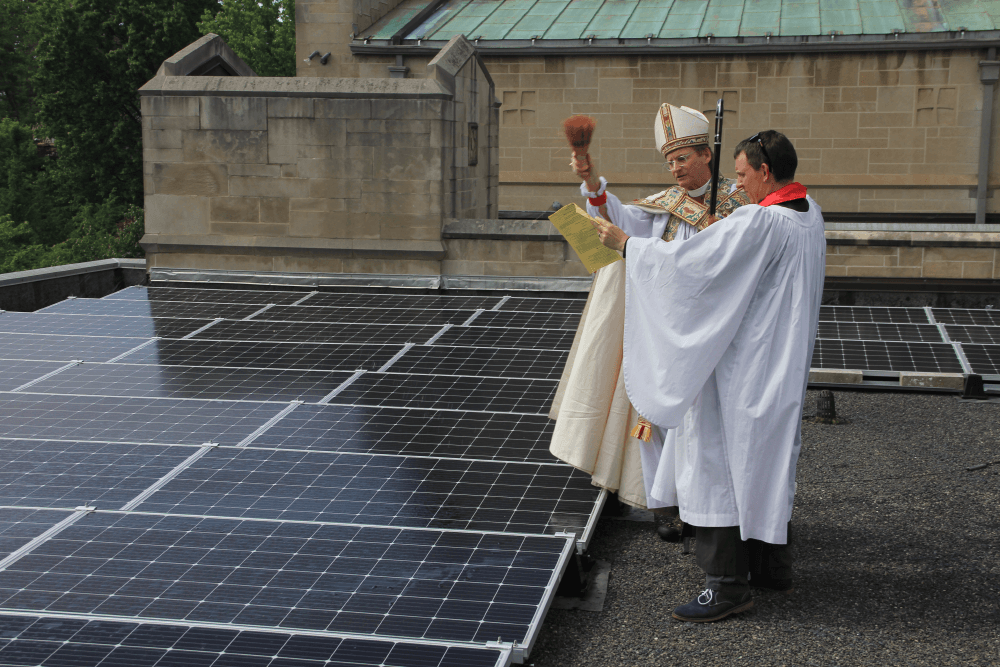Can churches spread the gospel of solar in coal country?

Former Pittsburgh bishop Dorsey W.M. McConnell and Noah H. Evans bless the solar panels installed at St. Paul's Episcopal Church in Mt. Lebanon Pennsylvania. (Courtesy photo)
Editor’s note: This story is part of "Growing a Green Church," an ongoing series focused on churches' efforts to steward their buildings and land effectively in the context of a changing climate. The project is produced in collaboration with the Christian Century, Episcopal News Service, Faithfully Magazine, National Catholic Reporter, and Sojourners, with support from the Solutions Journalism Network and funding from the Fetzer Institute. Find more stories in the series here.
In 2014, Shepherdstown Presbyterian Church in West Virginia installed an array of 60 solar panels with a scrappy financial model, hoping to lead by example and inspire other communities in Appalachia to transition to solar energy as well.
Five years later, across the West Virginia border, the congregation at St. Paul’s Episcopal Church in Mt. Lebanon, Pennsylvania, also wanted to take a climate action with community impacts. Their building is located on the ridge of a hill with great sun exposure. So, in 2019, the church installed a solar array. Church rector Noah H. Evans and the bishop of Pittsburgh blessed the solar array.





